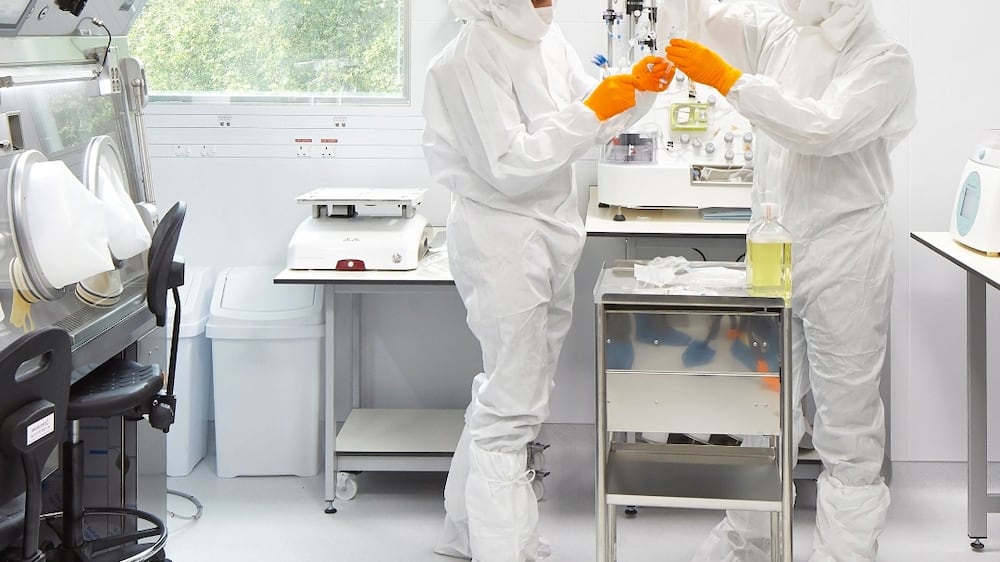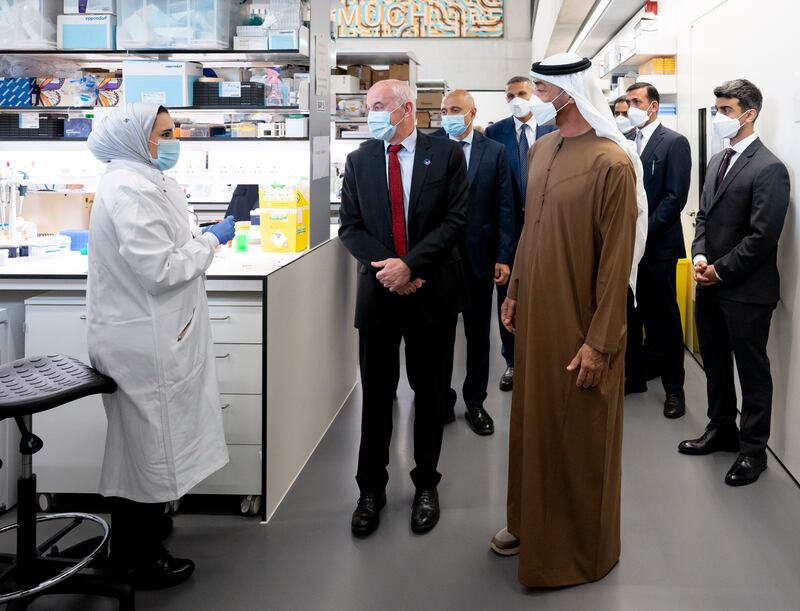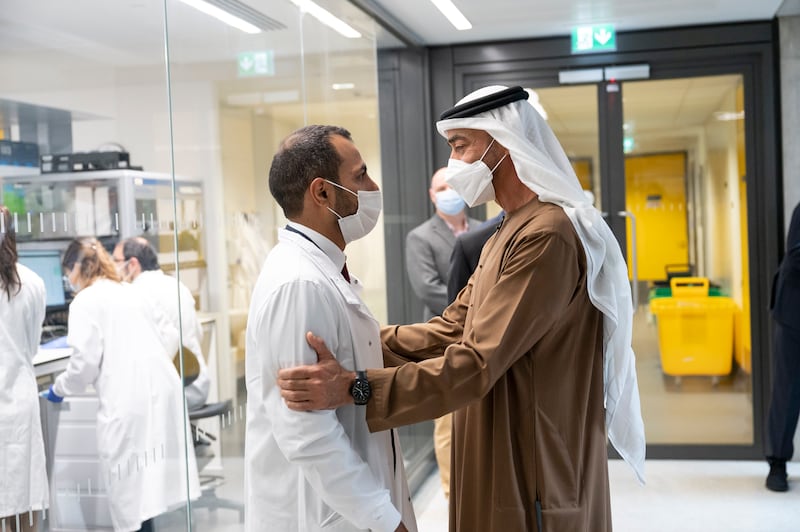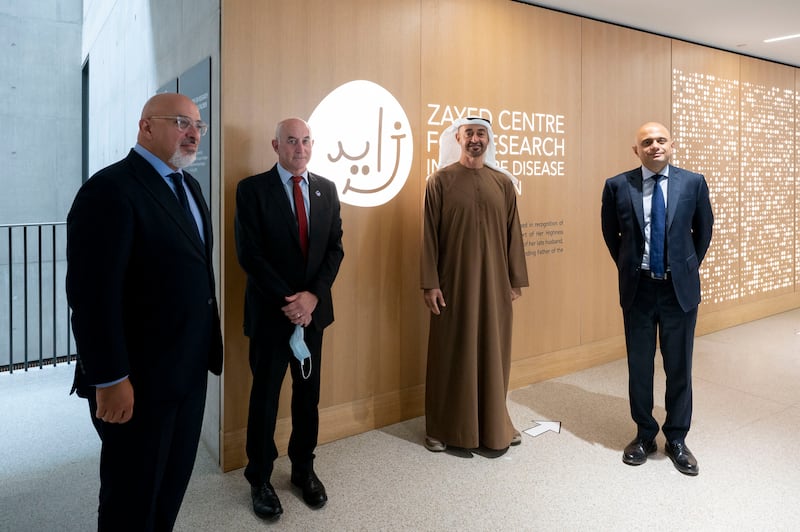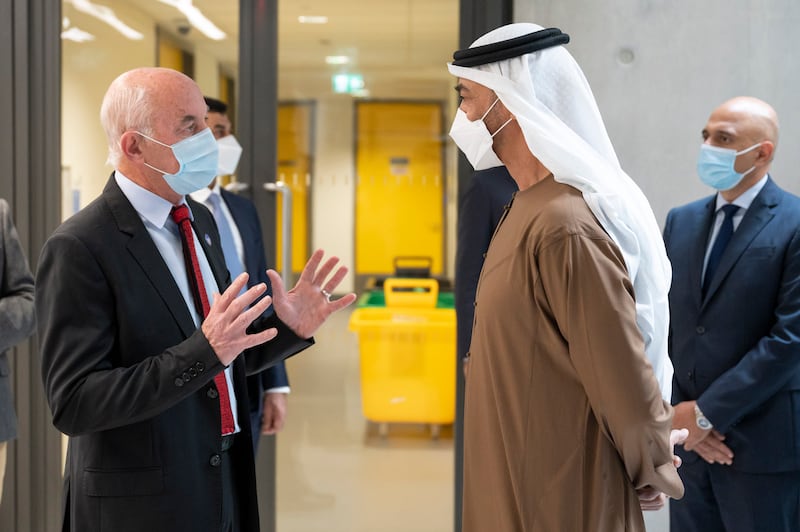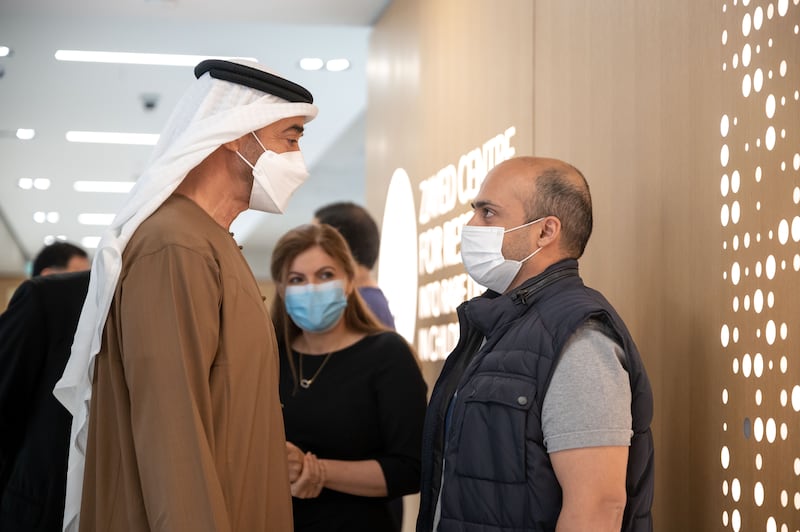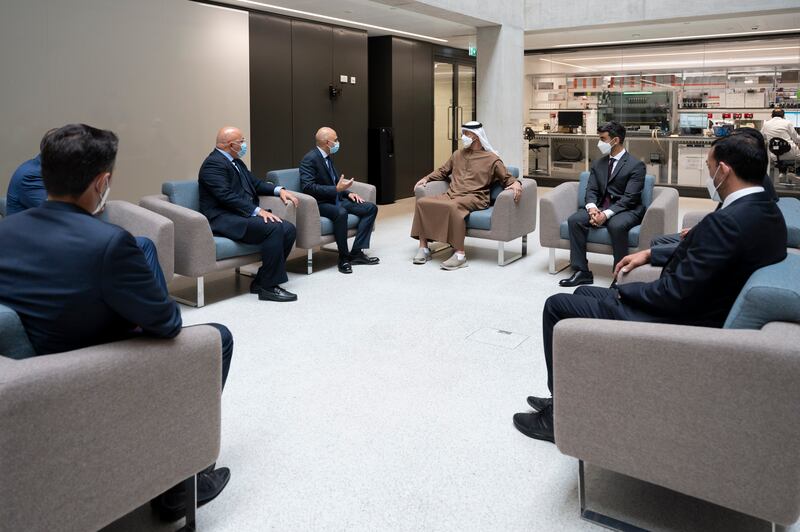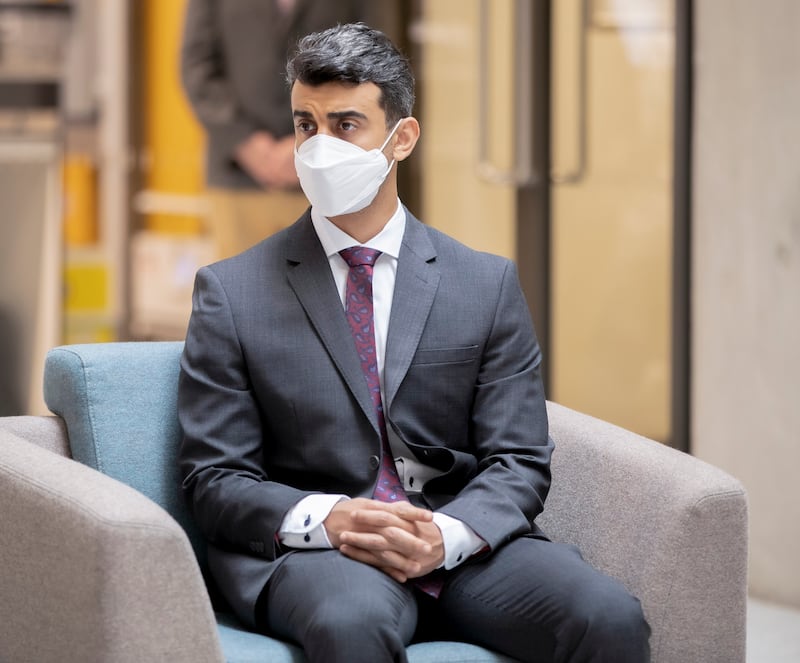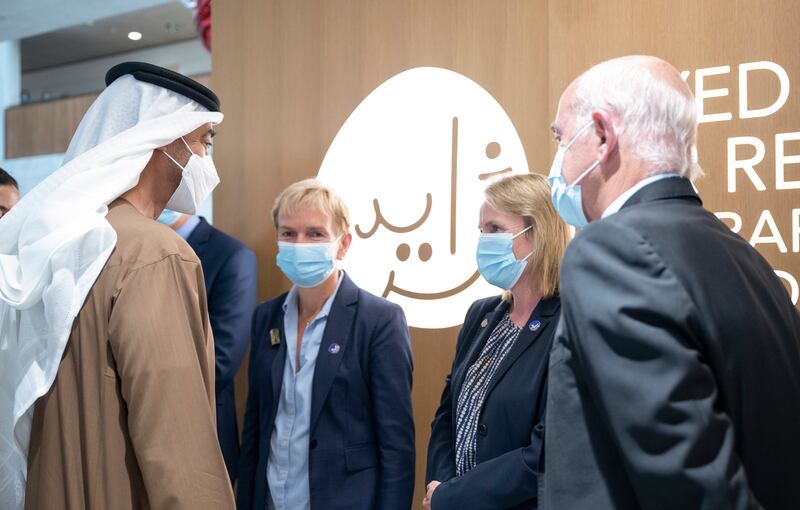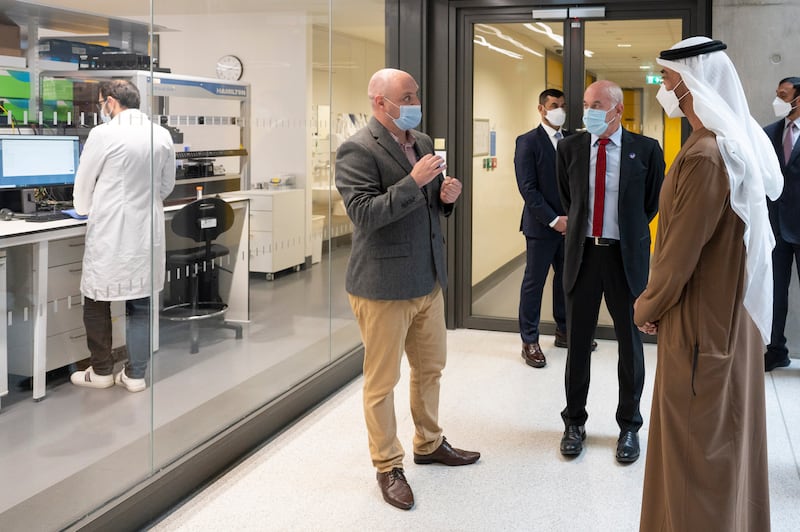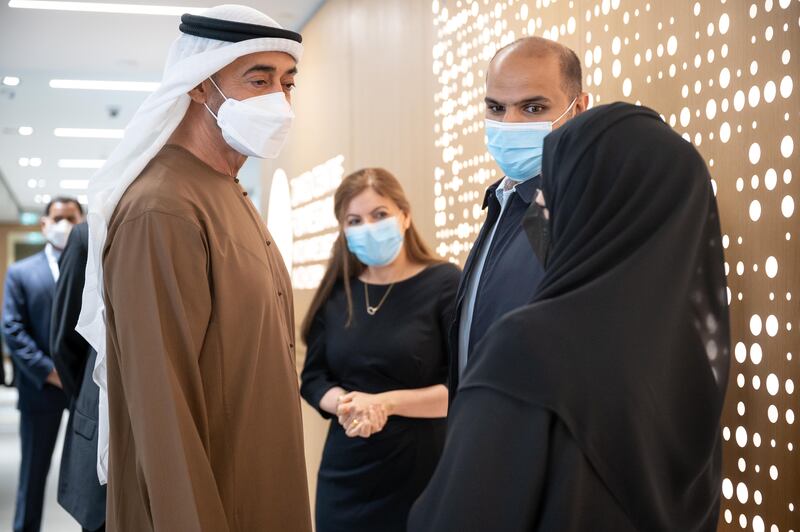Children are disproportionately affected by rare diseases, and few sufferers make it past their fifth birthday.
Thankfully, today, there are more life-saving treatment opportunities than ever before. However, the challenges of applying them effectively are immense, Prof Claire Booth told The National.
The path to effective care is often innovative or groundbreaking and there are no guides to rely on, said Booth.
“When a child is going to be the first person in the world who gets this treatment, it’s a difficult decision for the families, even though we think it’s going to work,” said Booth, a paediatric consultant at Great Ormond Street Hospital.
She is a world expert in her field and leads clinical research at the London hospital where the Zayed Centre for Research into Rare Disease in Children - which includes an outpatient facility and a laboratory for cell and gene therapy - has recently been granted expanded treatment capabilities.
Zayed Centre for Research — which opened in 2019 — is dedicated to treating the world’s rarest diseases in children, from babies born without functioning immune systems to liver and metabolic disorders. It was built partly with a £60 million donation from Sheikha Fatima bint Mubarak, and is a partnership between Great Ormond Street Hospital, University College London and Great Ormond Street Hospital Children's Charity.
“They’re such devastating diseases that they tend to present themselves early in life,” said Booth, who revealed her team's work is, for most patients, their last hope to find a cure.
“A lot of families contact us directly,” said Booth. “The standard treatment [for their child’s condition] isn’t working, or, in some cases, there is no treatment.”
But recent breakthroughs in the field mean that more children with rare diseases will survive.
Cell and gene therapy was pioneered at Great Ormond Street Hospital, a little more than 20 years ago. It involves manipulating the genes, cells or tissues causing the disease, and serves as an alternative to a bone marrow transplant for some conditions.
“When people are born with a genetic condition that leads to a disease, it's usually because a gene in their DNA isn't working properly. Gene therapy is either repairing or replacing that gene,” said Booth, who specialises in genetic disorders affecting the immune and metabolic systems.
The Zayed Centre for Research was awarded a licence to manufacture drugs by the Medicines and Healthcare Products Regulatory Authority (MHRA) in February. Stem and gene therapy products were previously produced at two labs in another wing of the hospital but the new approvals will serve to accelerate the production of medicines and increase the number of clinical trials taking place across the UK.
Research has begun on new methods of gene therapy such as in vivo, where a virus containing the corrective gene is injected directly into the body. “We try and correct the cells while they're still inside the patient,” said Booth.
In vivo treatments are currently being used for liver, brain and neuromuscular disorders as well as some metabolic conditions. “We can inject the virus directly into the fluid inside the brain,” said Booth.
Inside the 140-bench laboratory — one of the largest in Europe — Booth’s team of researchers work on different stages of an experimental treatment. “We use samples of patients’ blood cells to test the therapies that we’re developing,” said Booth.
Large glass walls on the ground floor give visitors a bird’s eye view of the basement laboratory. This emphasises the hospital’s “bench to bedside” approach, which enables a close connection between patients and clinical researchers.
“As patients come in they can see the scientists and researchers working on something that will impact them,” said Booth.
The track record of the facility is already stellar. In 2021, a clinical trial for ADA-SCIDS, an inherited disease where babies are born without a functioning immune system, found that 48 of 50 patients no longer showed symptoms of the disorder after a single round of treatment.
Previously, patients with ADA-SCIDS had to have twice or weekly injections until they could find a donor for a bone marrow transplant. “All the patients are alive, and 96 per cent of them were essentially cured with a one-off gene therapy,” said Booth of the trial done in collaboration with the University of California, Los Angeles.
The centre’s Gene and Cell Therapy Facility is where the medicines are prepared in a delicate and fragile process overseen by a dedicated team working to tight timeframes. The facility head, Dr Barry Flutter told The National that medicines are designed to treat individual patients and have a shelf life of a few hours, making on-site manufacturing essential.
“We build on the research programmes of the hospital, and translate them into products which can be given to patients,” said Dr Flutter.
Inside, seven highly-protected and sterile laboratories are used for all stages of the preparation, and have increased capacity to manufacture gene therapy products by more than 300 per cent — from 40 products a year to 150, the centre estimates.
The simulation room, which is identical to the other labs, is used for early manufacturing stages and training.
“Now that we have the licence, we’re moving,” he said. Three of the labs, he explained, will be used to produce vectors — which are the vehicles used to transmit the working gene into the living cell — in partnership with Virocell Biologics, a commercial company. This will allow scientists to double the number of vectors the company currently produces for UK-wide clinical trials.
This will allow scientists to double the number of vectors currently produced, and will serve to increase the number of clinical trials taking place across the UK.
Making each treatment can take up to six months, Flutter explained, but there are signs that this process could become easier in the future.
In December, the hospital announced it had treated a patient with a rare “incurable” form of leukaemia, using the latest gene-editing technology. The 13-year-old patient was in remission one year after treatment, having previously been given just months to live.
Annie Etuk, a scientist at the facility, explained that the technology could allow them to progress from the delicate task of making medicines uniquely designed for each patient, to creating “off-the-shelf” products for a wider range of people.
Despite these breakthroughs, gene and cell therapy research faces tremendous challenges. “For every patient that we do treat, there are many others that aren't eligible,” said Etuk.
Rare diseases struggle to get commercial investment. “The patient population is very small, we’re talking about 10 to 20 patients being treated in the world per year” said Booth. “So companies are pulling out.”
Booth added that their belief is misguided: “What you learn in rare diseases can often be applied to much more common diseases, and this can impact huge populations of patients.” This includes treatment for cancers and sickle cell anaemia.
The AGORA initiative, founded by Booth in September last year, explores not-for-profit and sustainable ways to increase access to rare disease treatments.
Among these are the commercial partnerships afforded by the MHRA licence. “The financial sustainability of that model with help the research here at Great Ormond Street,” said Booth.
Staff shortages within the NHS remain an issue, particularly when making medicines. “It can be quite challenging to find sufficient staff to manufacture your product from start to finish,” said Etuk.
Misinformation about gene and cell therapy is also a risk that researchers are assessing. Booth recalled a recent protest outside a summit that she attended in London, triggered by a Chinese trial which announced the successful gene editing of embryos.
“There’s a level of education and awareness that needs to change. We’re changing the genetic make-up of a person’s blood, liver or brain system where the diseases are,” she said, “not their genetic make-up or family line.”
To date, hesitancy about gene therapy has not been an issue for families seeking help from the London hospital. “The families come to us with a great deal of hope,” said Booth, “because they are looking for a cure.”
